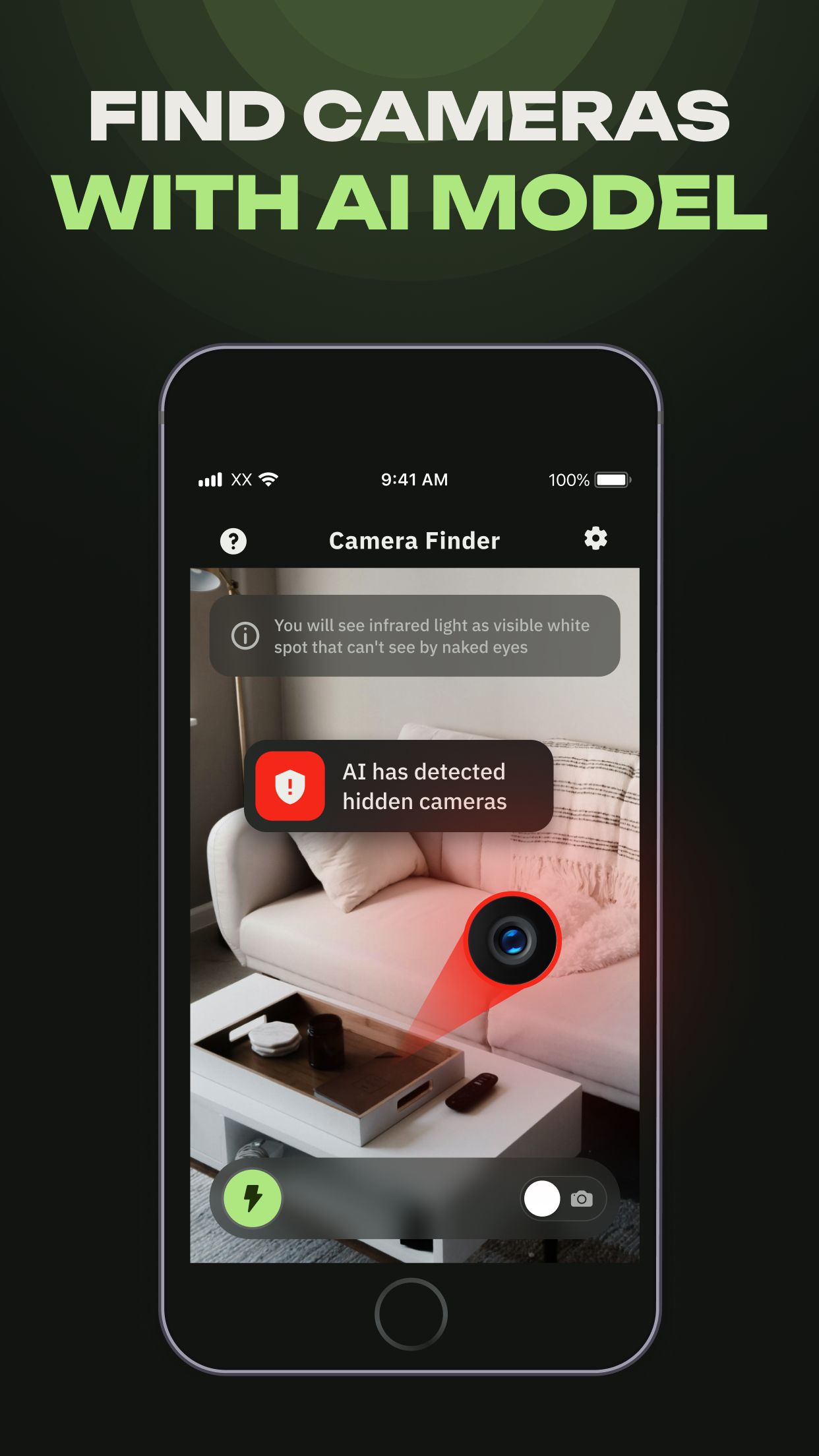Hidden Camera Detector, Finder: Comprehensive Privacy Security Analysis
by OSMAN EVCIL
This iOS application utilizes smartphone cameras and network scanning to detect hidden surveillance devices. Designed for privacy-conscious travelers and security professionals seeking additional protection in unfamiliar environments.
Detailed Review
Hidden Camera Detector, Finder positions itself as a digital privacy tool for the modern age, addressing growing concerns about unauthorized surveillance. The application leverages smartphone hardware to identify potential hidden cameras through both visual detection and network analysis, offering users an additional layer of security in various environments.
The application's core functionality operates through two primary detection methods. The camera-based detection uses lens reflection identification, where the smartphone's camera scans for telltale reflections that might indicate hidden camera lenses. This is complemented by an augmented reality interface that overlays markers on detected objects. The network scanner component analyzes Wi-Fi connected devices, identifying potential surveillance equipment among connected gadgets. Both methods require proper lighting conditions and systematic scanning patterns for optimal effectiveness.
User experience centers around a minimalist interface with clear visual indicators and straightforward controls. The AR detection mode provides real-time feedback through the camera viewfinder, while the network scanner presents devices in a categorized list format. Practical usage typically involves methodical room scans, with recommended patterns including slow horizontal and vertical sweeps while monitoring for detection alerts. The application performs best in well-lit environments with minimal visual clutter that could interfere with lens detection algorithms.
Without available user reviews for specific analysis, the application's 4.75/5 rating suggests generally positive reception. Typically, such applications receive feedback regarding their effectiveness in specific scenarios like hotel room checks or short-term rental inspections, though individual results may vary based on environmental factors and camera concealment methods.
The application demonstrates strength in its dual-approach detection methodology and straightforward implementation. Limitations include dependence on optimal lighting conditions for optical detection and the inability to identify non-Wi-Fi or offline recording devices. It serves best as a supplementary security measure rather than a comprehensive solution, particularly valuable for frequent travelers, privacy advocates, and corporate security personnel conducting preliminary sweeps of unfamiliar spaces.
Key Features
- •Augmented reality camera scanning identifies lens reflections through visual analysis, providing real-time detection markers during environmental sweeps
- •Network device scanner analyzes all Wi-Fi connected equipment, flagging potential surveillance devices among connected gadgets
- •Magnetic field detection utilizes smartphone sensors to identify anomalous electromagnetic emissions that may indicate hidden electronics
- •Infrared light detection capability helps identify night vision cameras that might be invisible to the naked eye
- •User-friendly interface with clear visual indicators and simple navigation controls suitable for non-technical users
- •Comprehensive reporting system documents detected devices with timestamps and location data for security records
Why Users Love It
Dual detection methodology
Straightforward user interface
Perfect for: Privacy-conscious travelers and security professionals requiring environmental sweeps
Screenshots





App Details
Developer
OSMAN EVCIL
Platform
iosRating
★4.8
Last Updated
9/7/2025